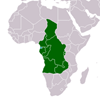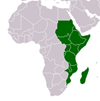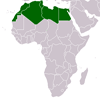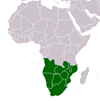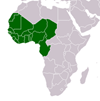Mortality of fish escaping travel gears
Mortality of fish escaping travel gears
A great deal of progress has recently been made in reducing by catch and discards through improving the selectivity of fishing gear. Selective fishing has a large potential to reduce fish mortality among non-target species and juveniles, but it can be justified only if significant numbers of escaping fish survive. This study aims to assess and summarize the principal factors affecting the stress, injury and mortality of fish that arise from fishing processes, particularly when fish escape from trawl gears. Potential sources of error in the assessment of survival are identified, and improved methodological approaches and practices are suggested. Furthermore, the study attempts to evaluate the key principles for designing fishing gears and operations that reduce or eliminate the mortality of escapees. Finally, it assesses the problems associated with estimating the impacts of unaccounted fish mortality. Studies on the mortality of fish discarded from the decks of fishing vessels generally show high mortality rates, although the types of injuries and their severity are highly species-specific. Most fish with gas bladders that inflate after capture die because of pressure changes. The post-release mortality of other fish and aquatic organisms (i.e. those without gas bladders) is more variable and may sometimes be low. Mortality is also related to the overall fragility and physical characteristics of species. For some species, discard mortalities can be reduced through reduced exposure to air and improved on-deck handling procedures, but in many cases a significant reduction of discard mortality is difficult to achieve. Efforts should therefore be directed towards maximizing the escape of fish during fishing. This would significantly increase the likelihood of their survival. Most scientific work on escape survival applies to towed gears, in particular trawl gears. In general, relatively high survival has been observed for many species, particularly gadoids and flatfishes, which escape from trawl codends. Substantially lower survival rates have been recorded for some pelagic species, but few studies have adequately explained the full range of stress, injury and mortality that can occur when fish escape from trawl codends under commercial fishing conditions. Moreover, survival estimates may have been affected by inferior methods of collecting, transporting and monitoring the escapees. Biases may have been significant, particularly among the smallest escapees, which are most sensitive to all kinds of handling. Substantial improvements in methodologies for assessing escape mortality rates across a wider range of fisheries and environmental conditions are suggested. There are various options available to improve the survival of escapees. First, fish that escape from a fishing gear should do so quickly and, in the case of towed gears, should not enter into the aft part of the codend, where the risk of serious injury is greatest. Installing escape panels or other sorting devices at strategic positions in a fishing gear can enhance escape and the survival of juveniles and non-target species. Furthermore, facilitating the voluntary escape of fish through various constructional and operational solutions would increase the likelihood of their survival.
CITATION: Suuronen, Petri. Mortality of fish escaping travel gears . Rome : FAO , 2005. - Available at: https://library.au.int/mortality-fish-escaping-travel-gears-3

